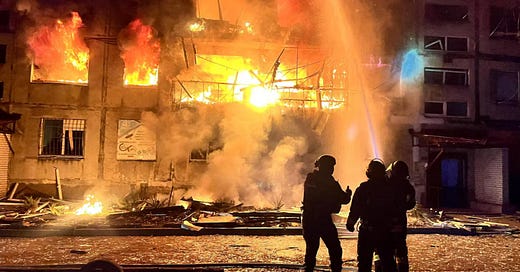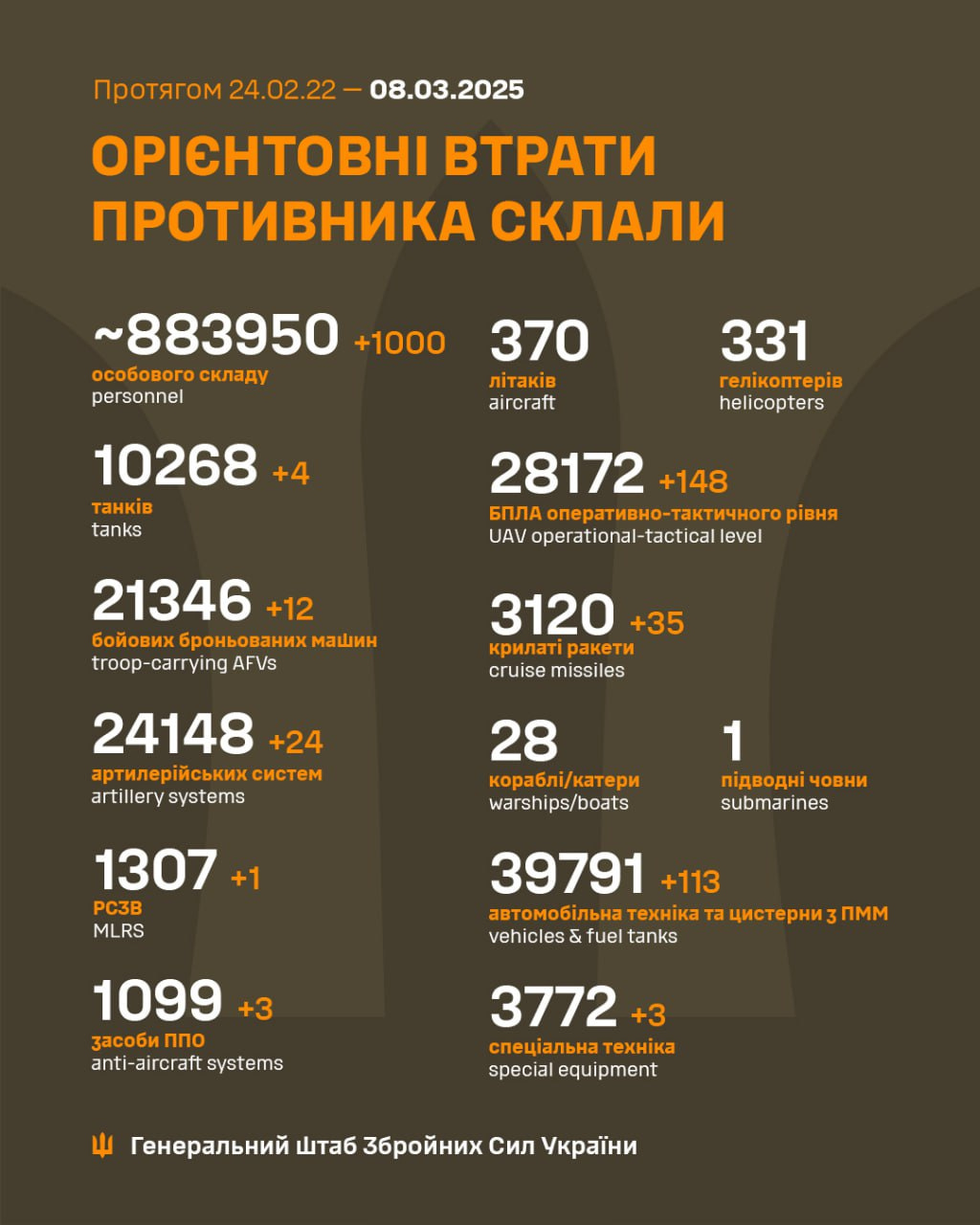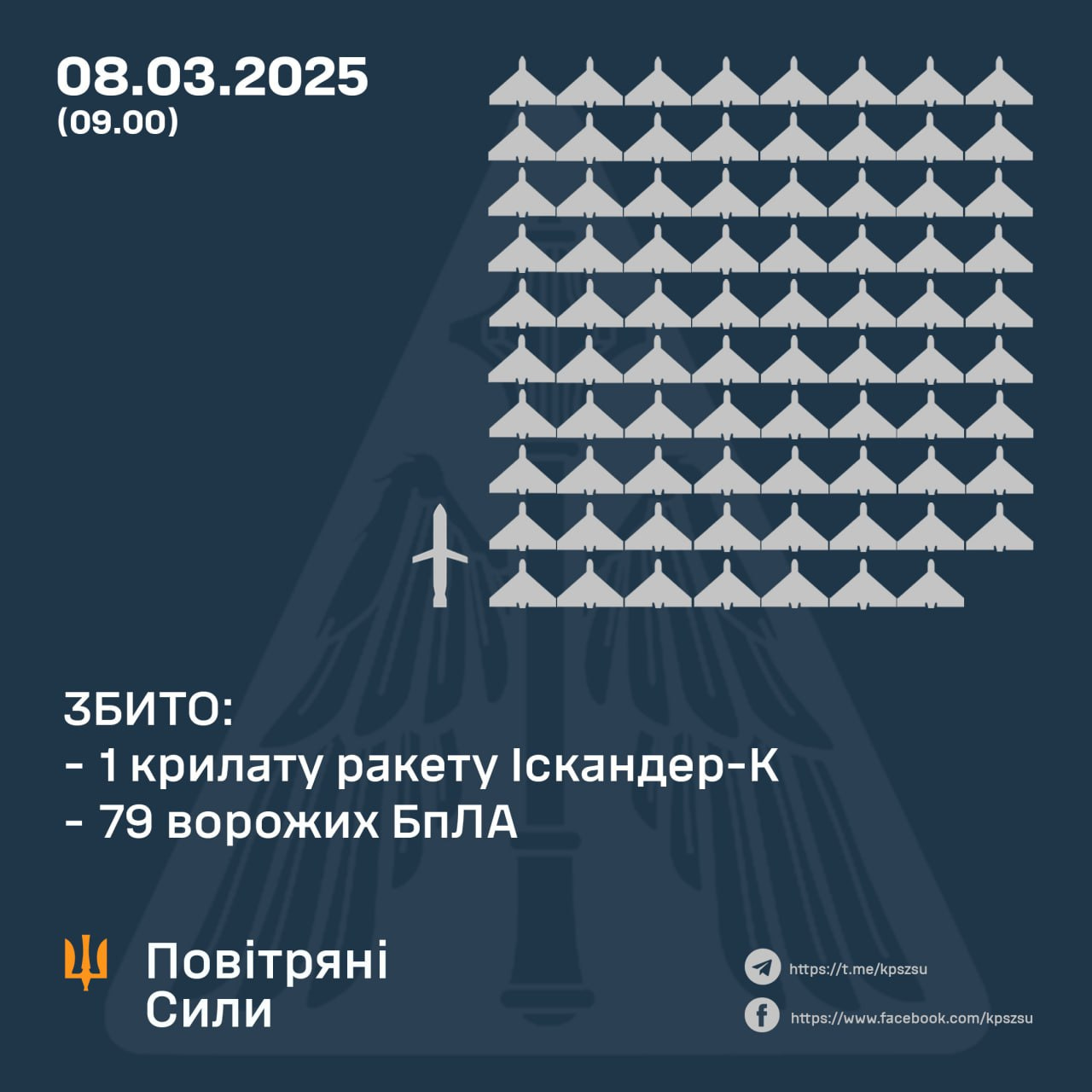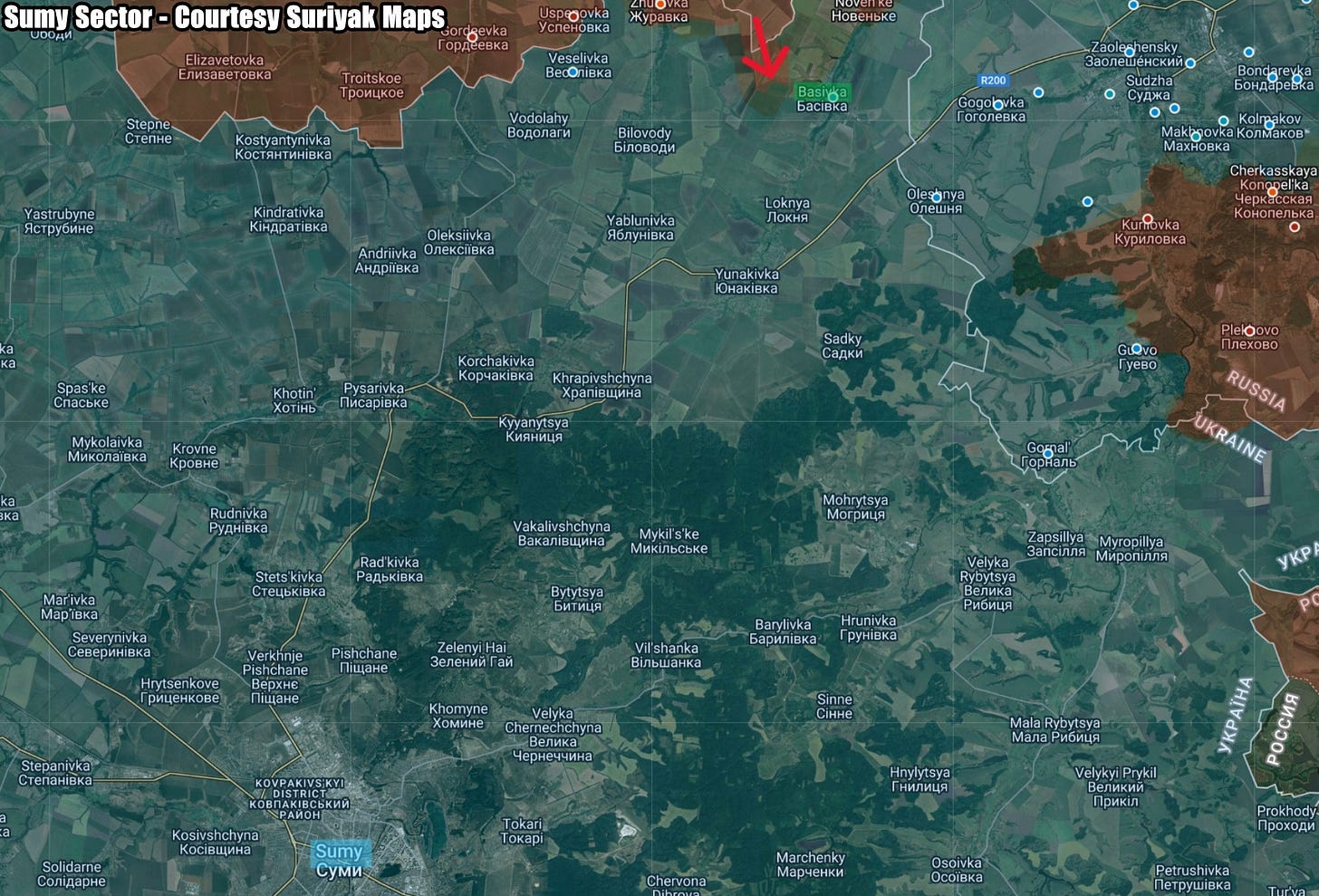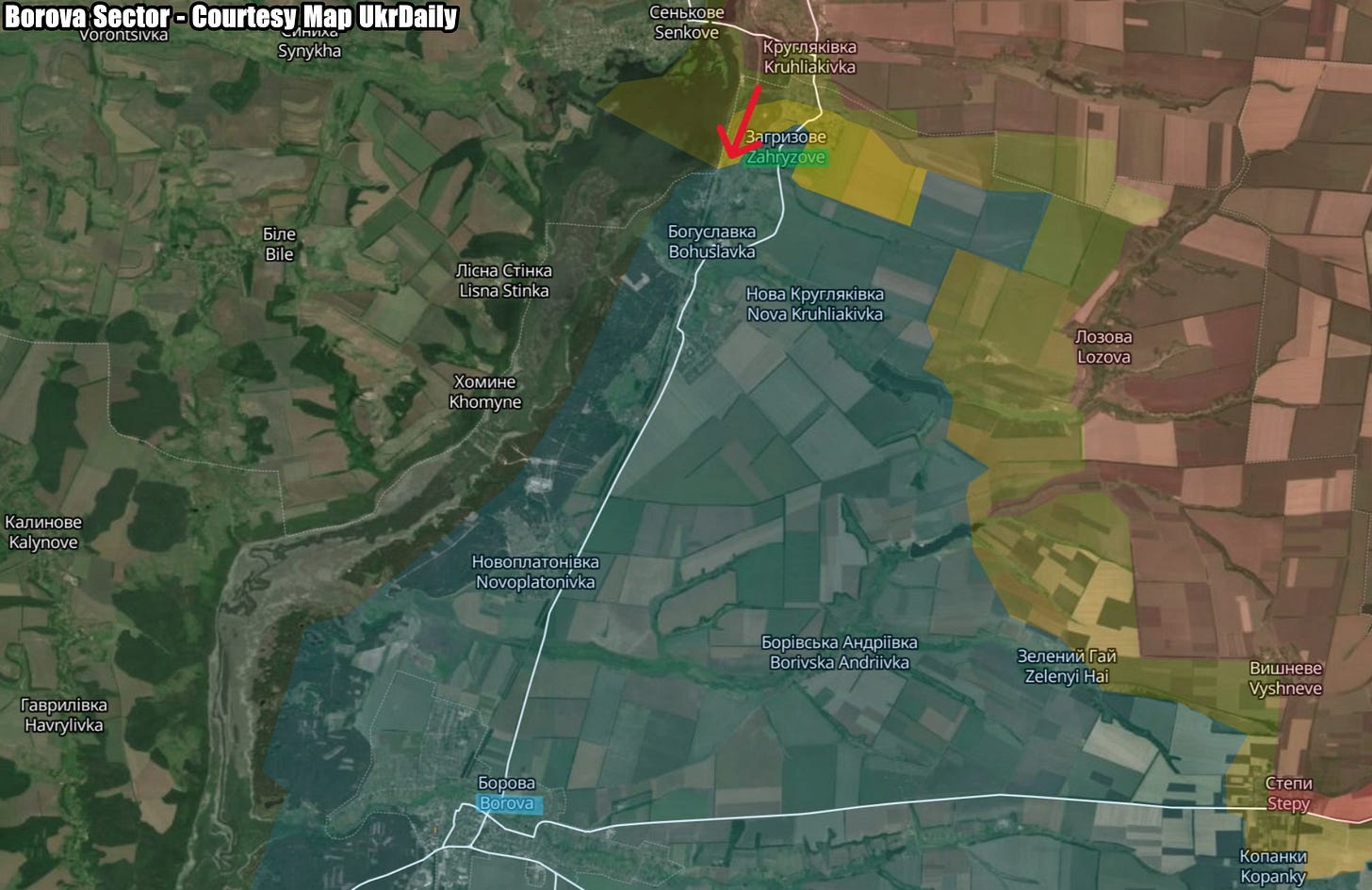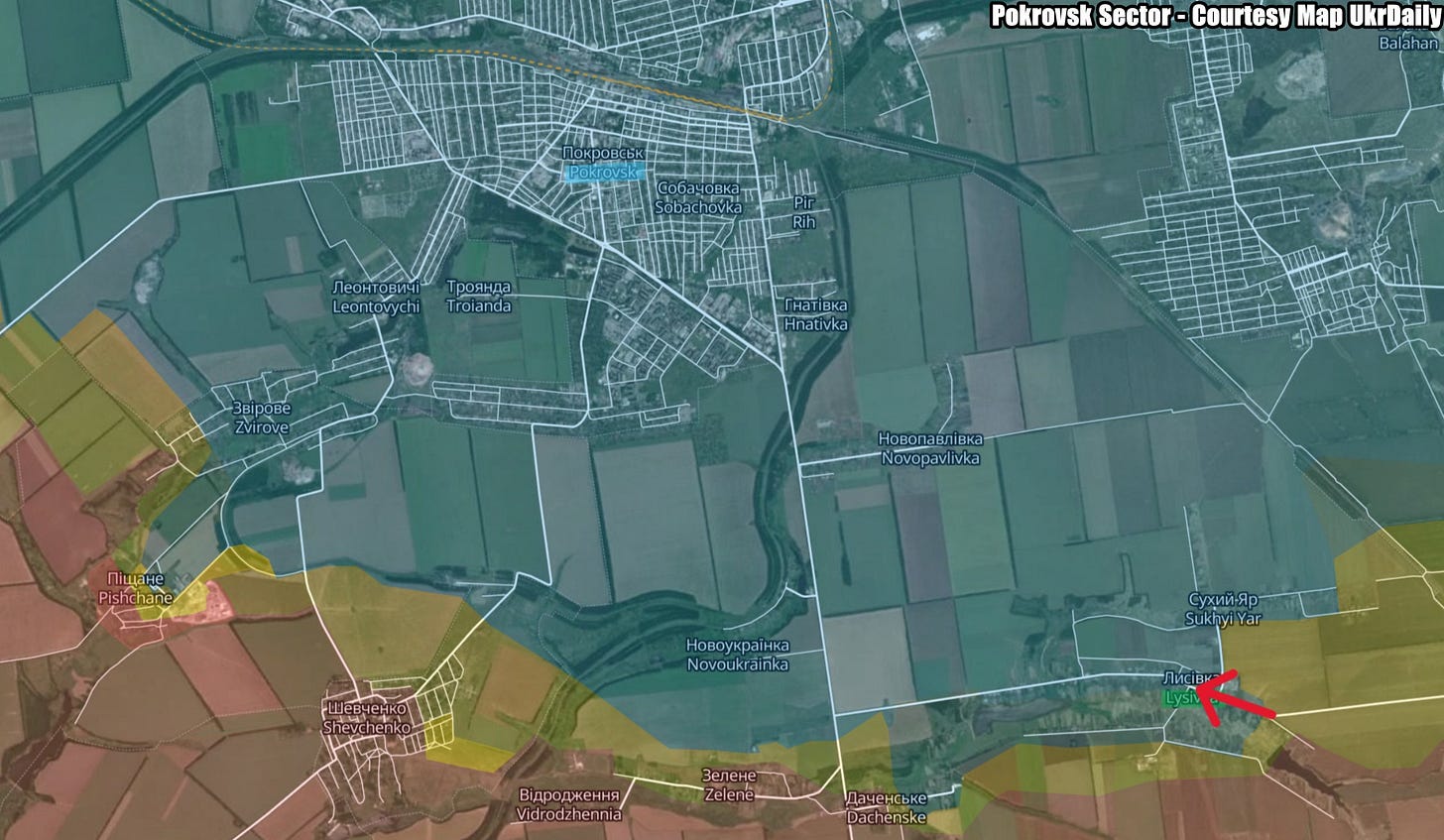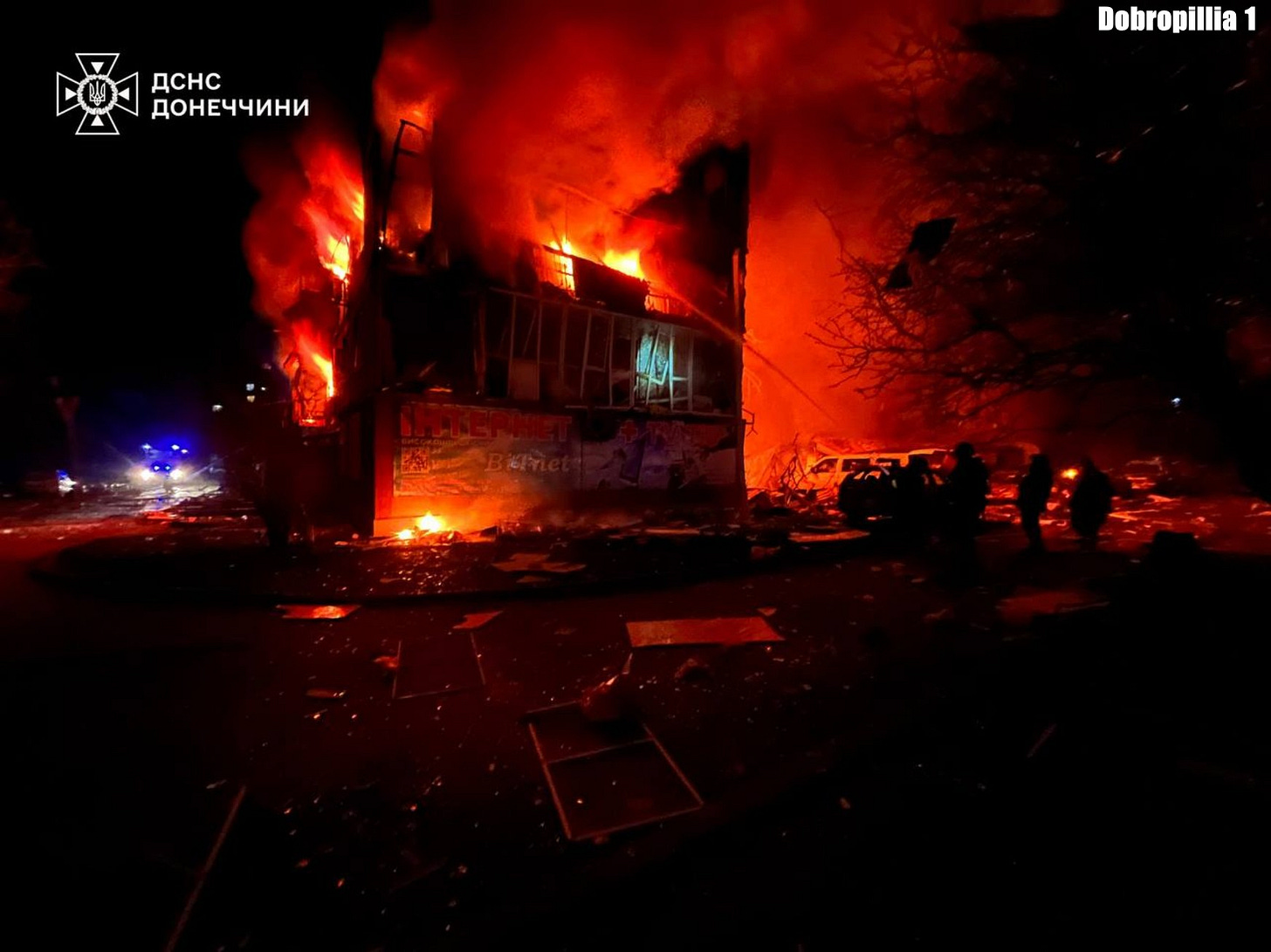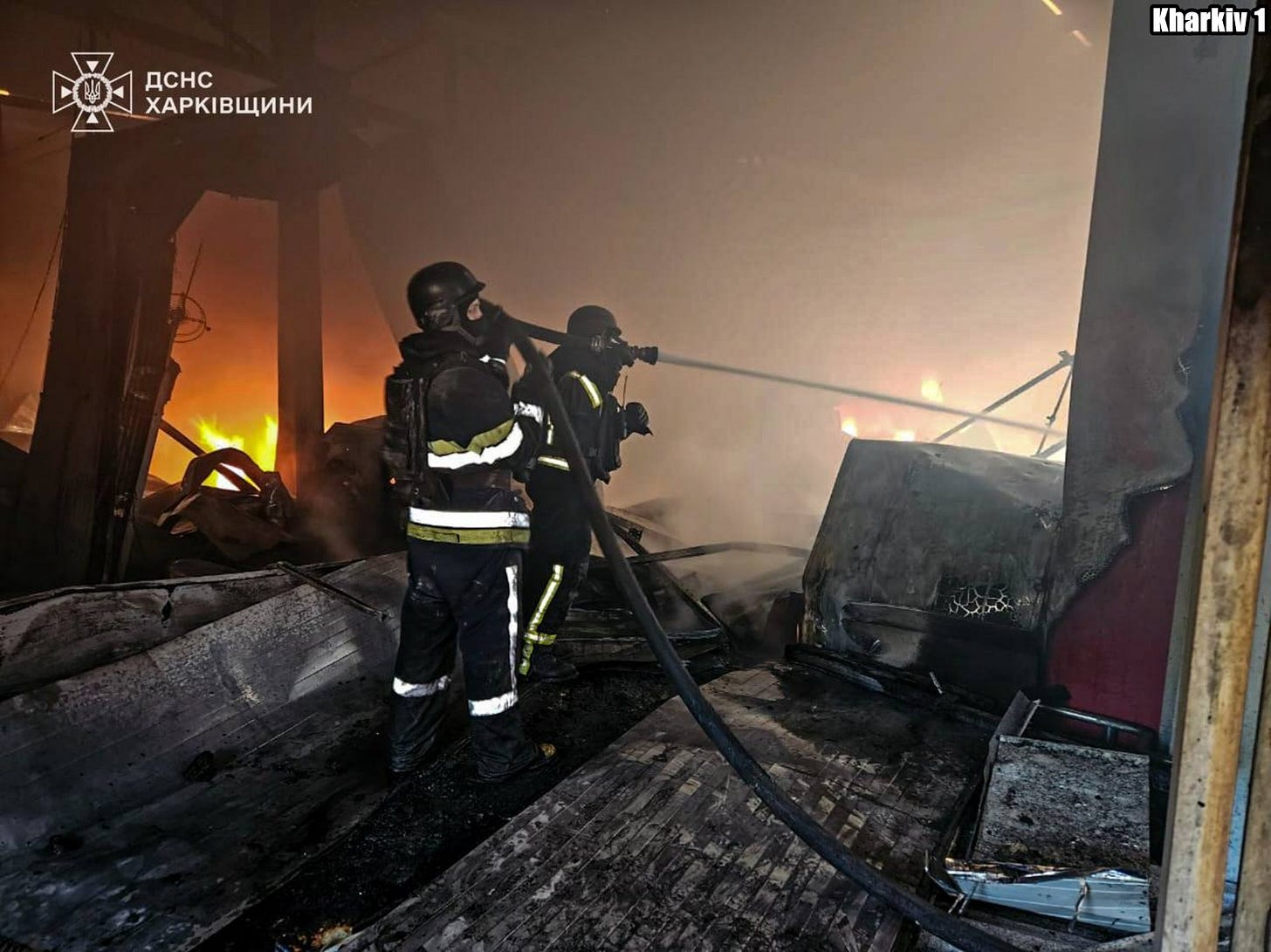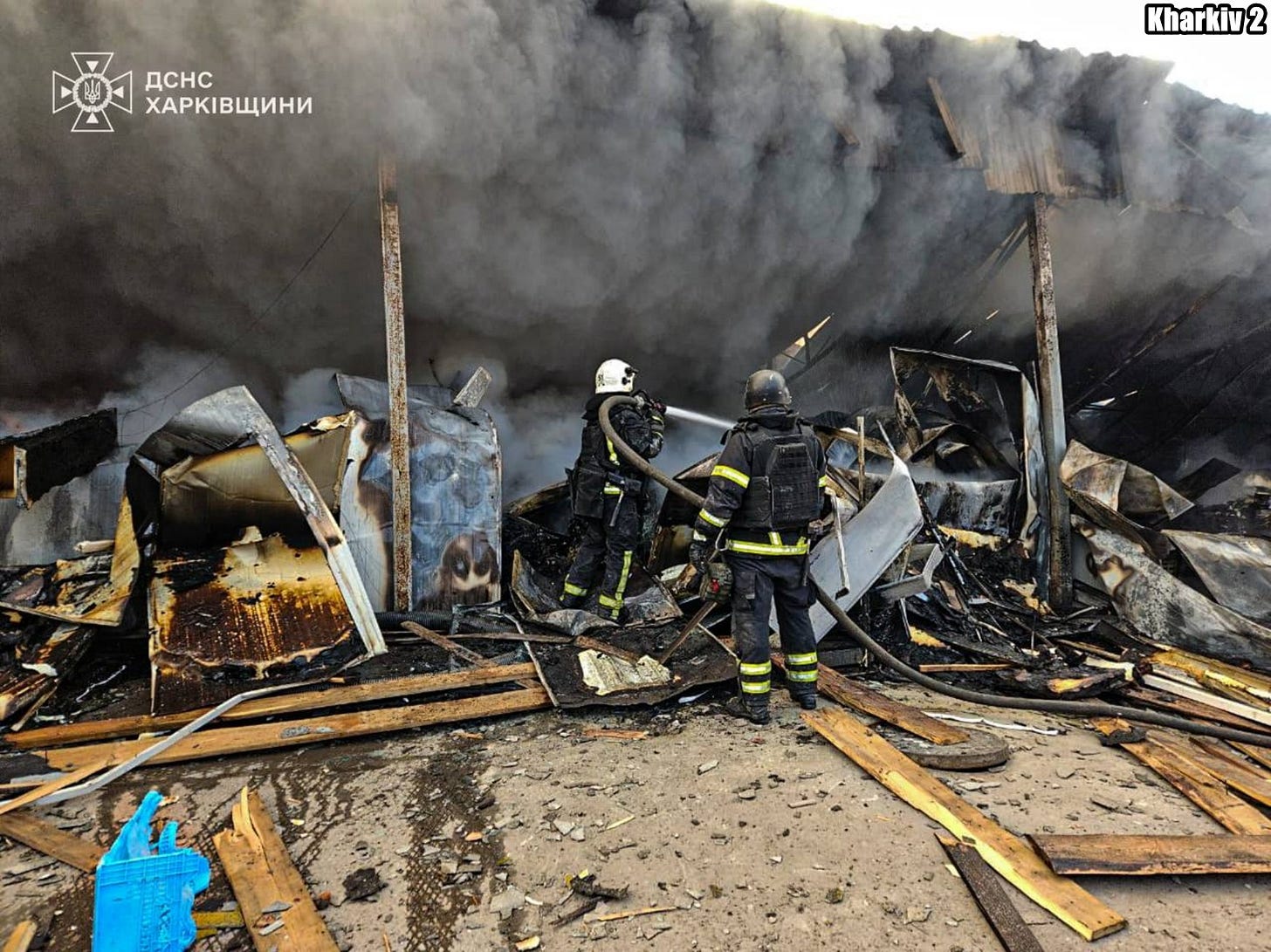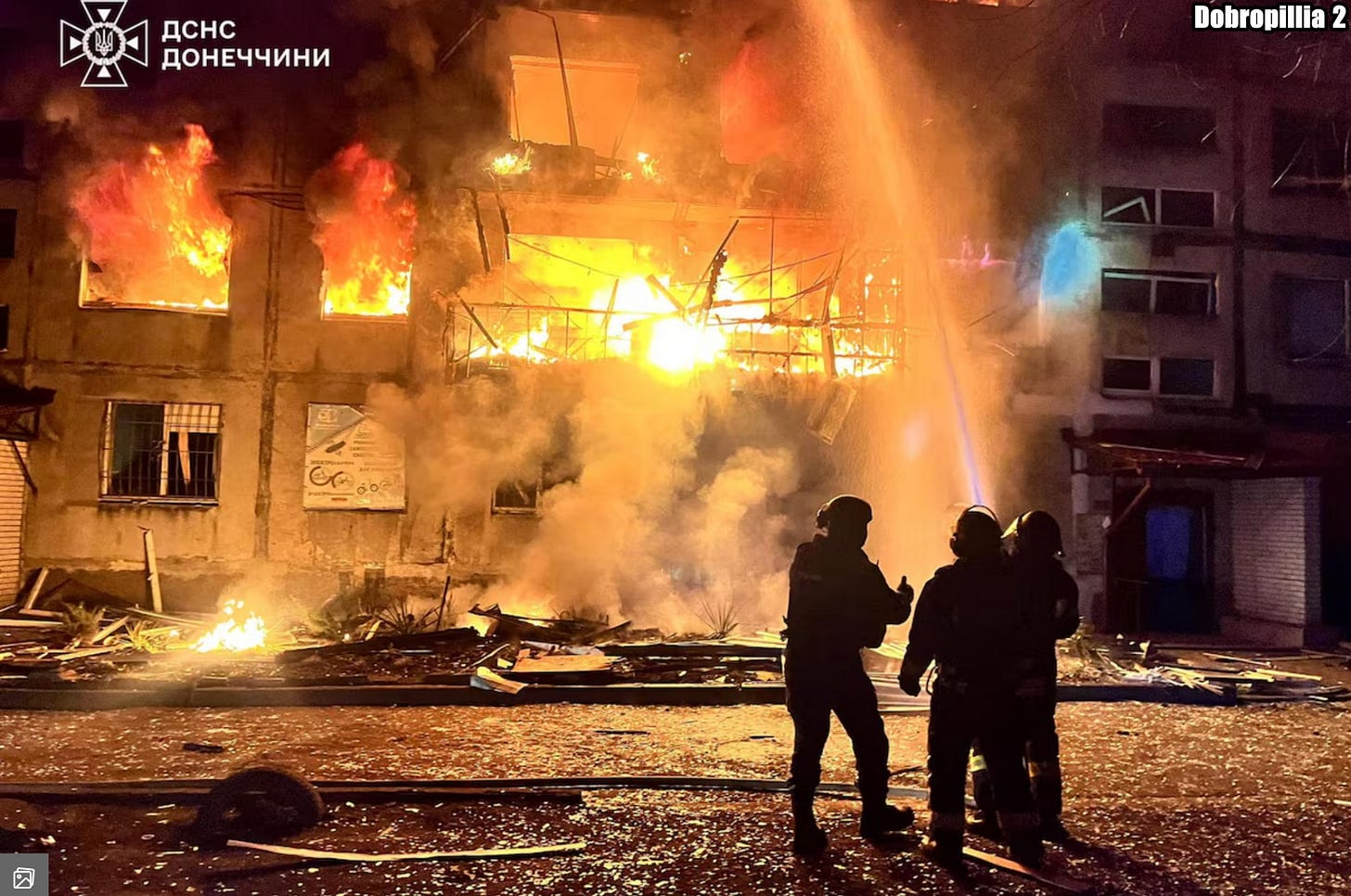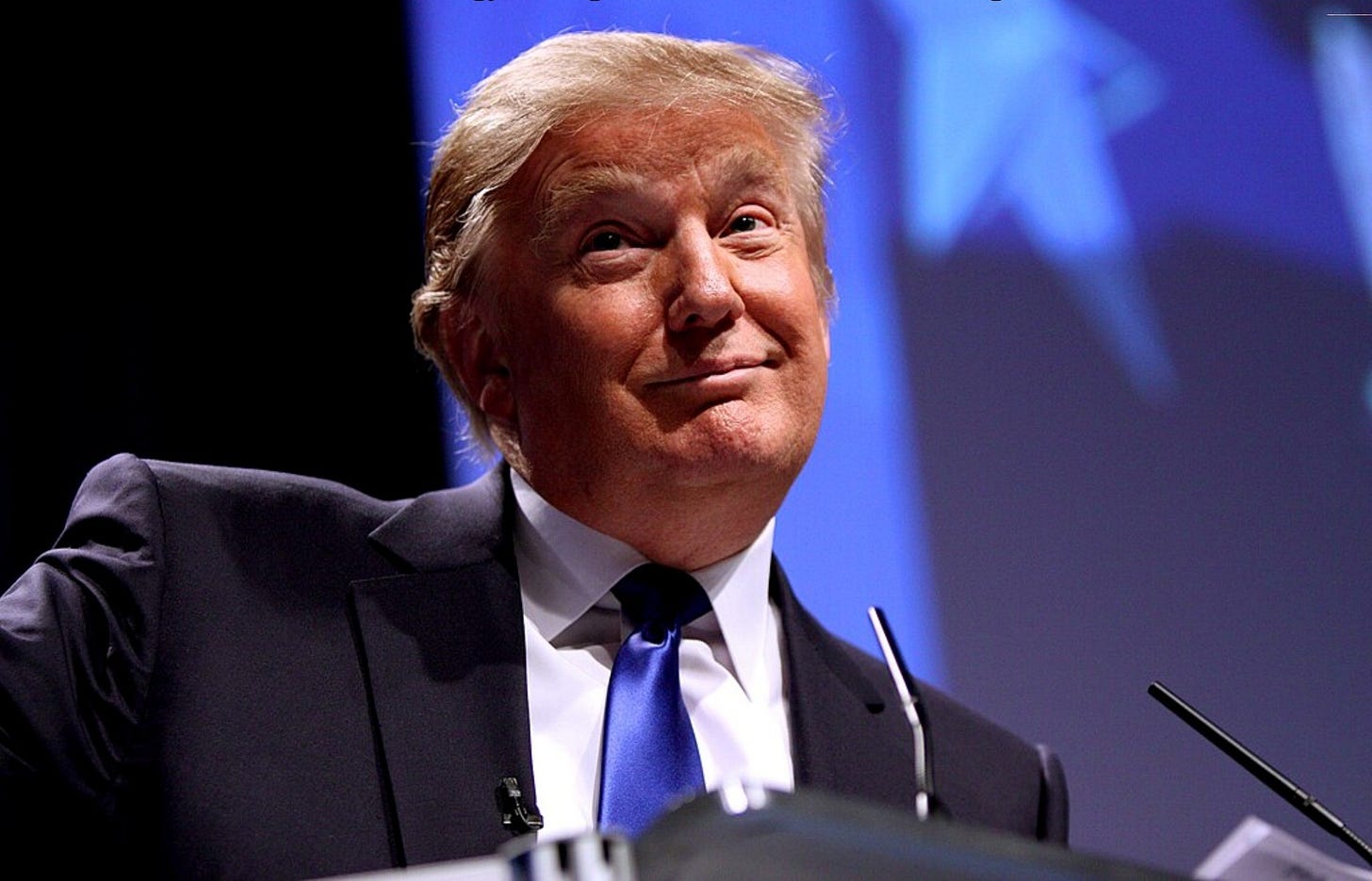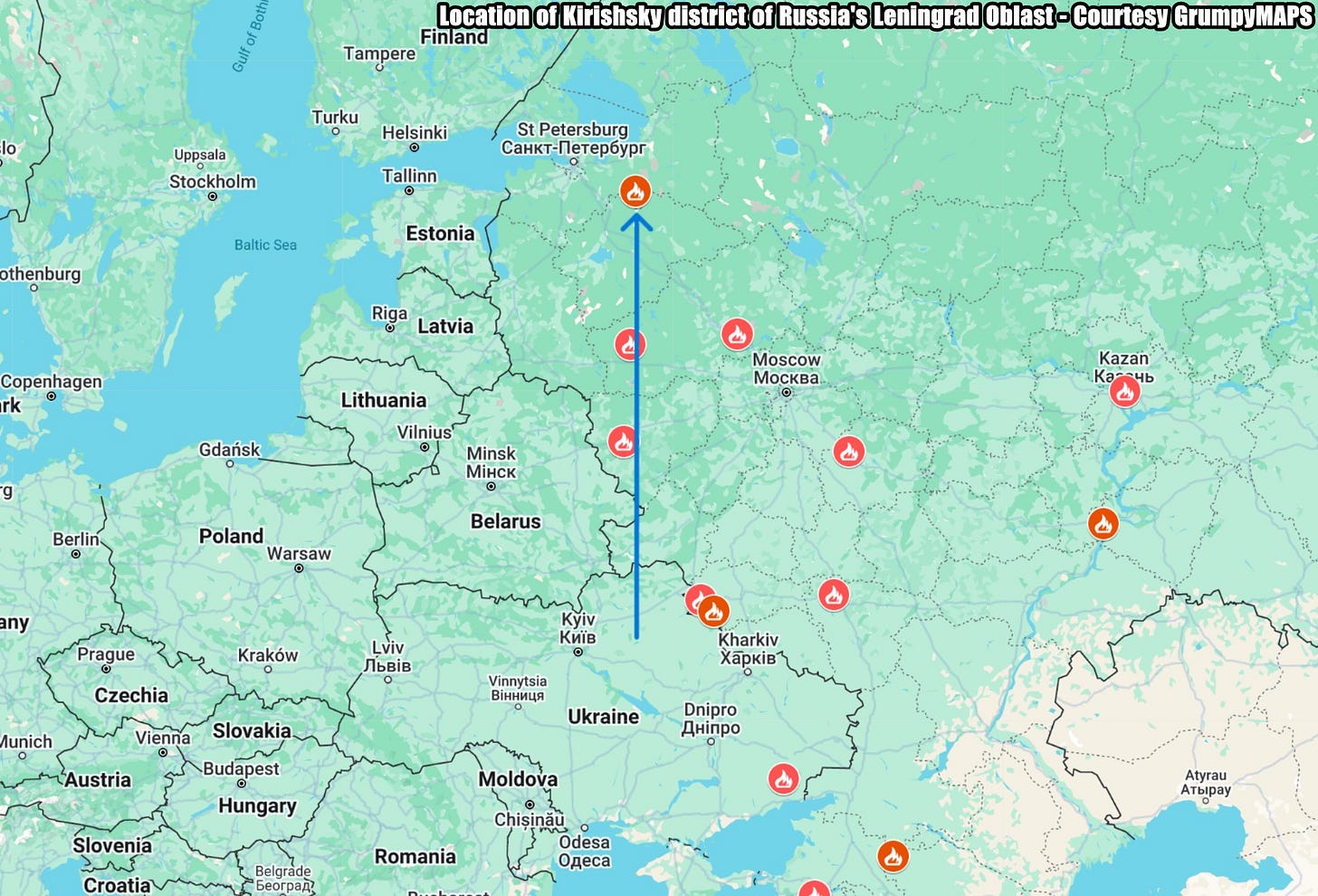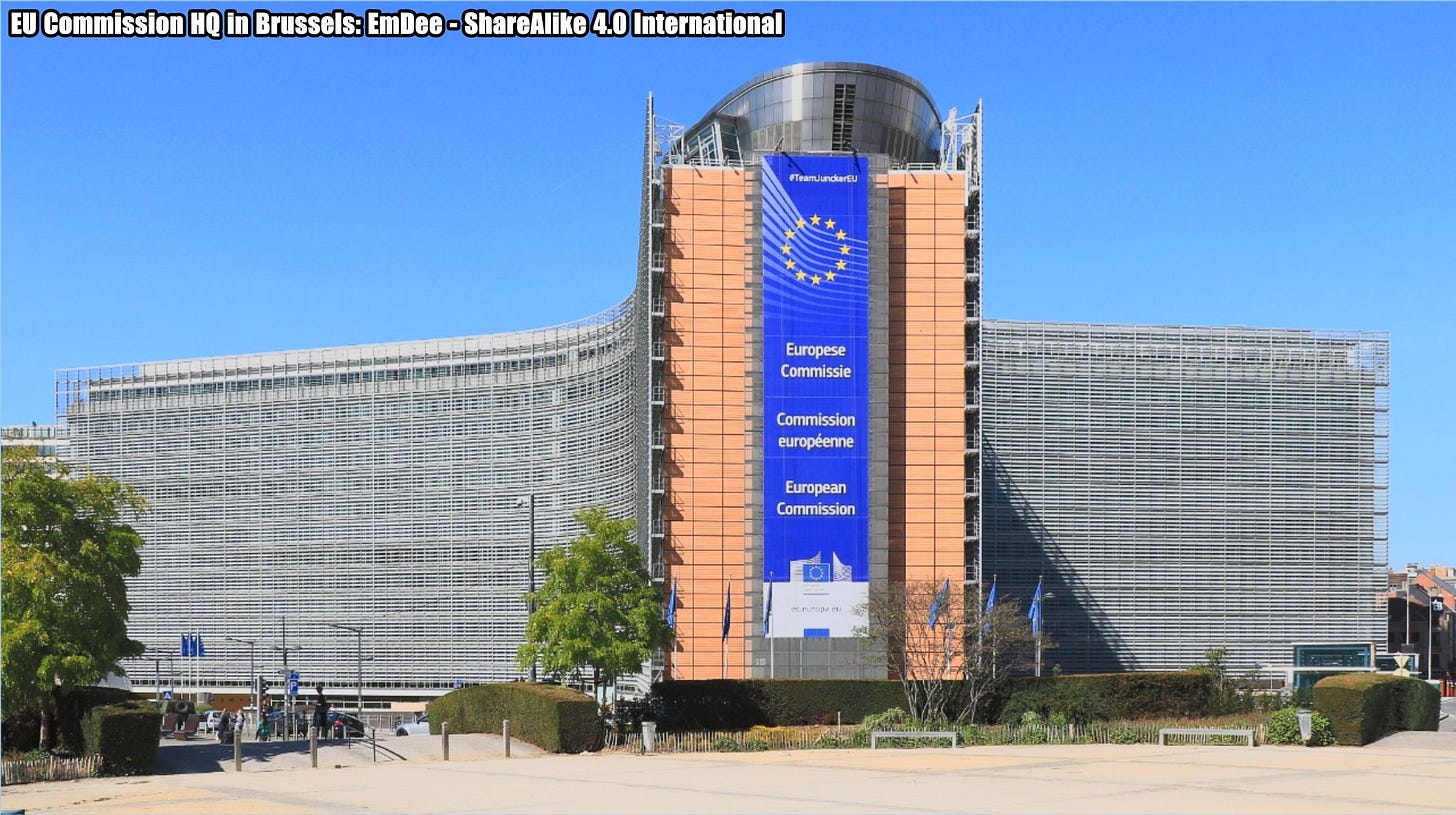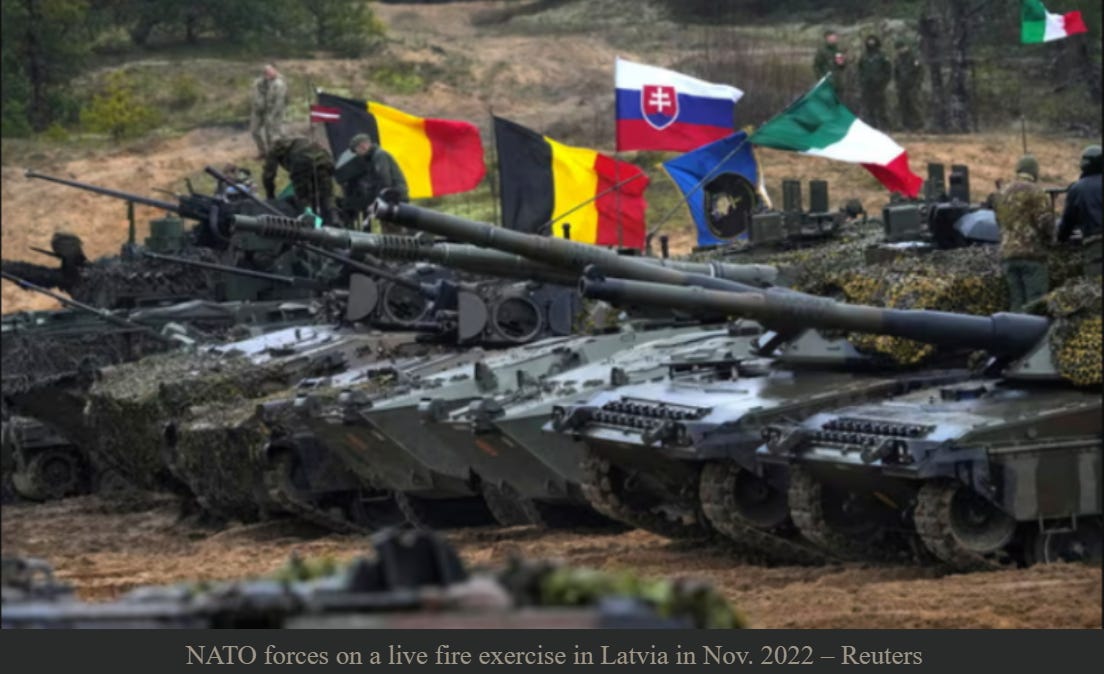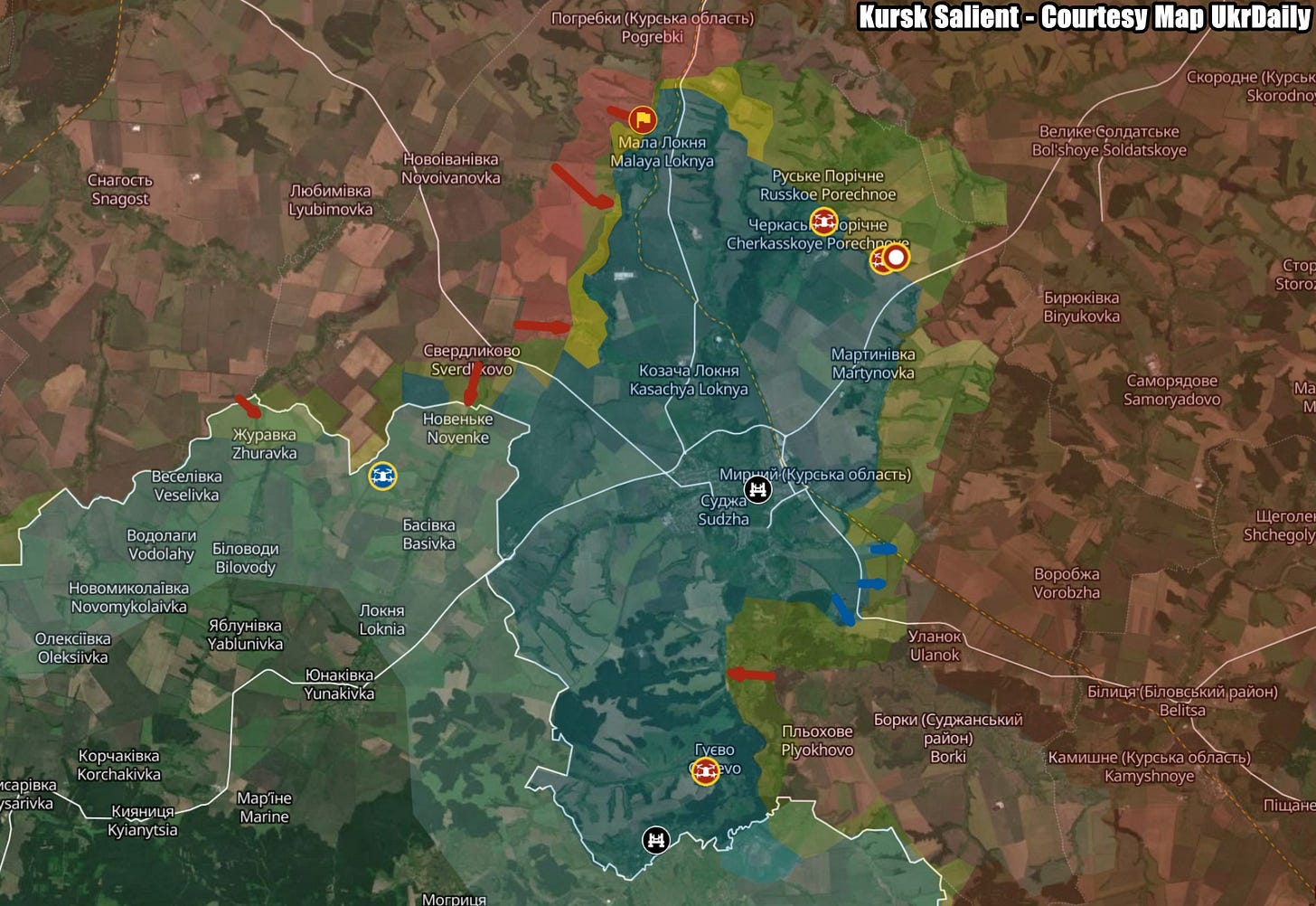Slava Ukraini! In early 2022 I began a Telegram channel aggregating news from a number of sources daily on the war in Ukraine. In June 2023 I began providing a daily draft for the Ukraine War Brief Podcast collecting news from over 70 sources daily, which formed the basis of the script. While the Podcast no longer exists I have continued to make this Brief available for my followers here on Substack for those who wish to keep up with the news from the war.
All the latest news on the Russo-Ukraine War 6 days per week
ALONG THE CONTACT LINE
GSAFU Morning Report
The General Staff of the Armed Forces of Ukraine in its Operational Information update at 08:00 on Mar 8 stated that day 1109 of the full-scale invasion of the Russian Federation against Ukraine had begun.
The situation on the line of combat remains tense in some sectors. Ukrainian defenders continue to actively counteract the Russian aggressor, causing them significant losses in personnel, equipment and technology. Exhausting the enemy along the entire front line and continuing to disrupt the plans of Russian occupiers to advance deeper into the territory of Ukraine.
During the past day, 124 combat engagements took place.
Over the past 24 hours, the enemy carried out 72 missile strikes, 103 air strikes, used 2,696 drones and fired approximately 5,300 artillery shells across the positions of Ukrainian forces and civilians.
Air Force Daily Report
1 CRUISE MISSILE, 79 ENEMY UAVS SHOT DOWN,54 DRONES FAILED TO REACH THEIR TARGETS (LOCATIONALLY LOST)
➖➖➖➖➖➖➖➖➖
On the night of Mar 8, 2025 (from 20:00 on Mar 7), the enemy attacked with two Iskander-M/KN-23 ballistic missiles and one Iskander-K cruise missile from the Rostov region of the Russian Federation, as well as 145 Shahed attack UAVs and simulator drones of various types from the directions: Millerovo, Kursk, Shatalovo, Bryansk, Primorsko-Akhtarsk - the Russian Federation, Chauda - Crimea.
The air attack was repelled by aviation, anti-aircraft missile troops, electronic warfare units, and mobile fire groups of the Air Force and Defense Forces of Ukraine.
As of 09:00, the shooting down of an Iskander-K cruise missile and 79 Shahed attack UAVs and drones of other types in Kharkiv, Poltava, Sumy, Chernihiv, Cherkasy, Kyiv, Kirovohrad, Dnipropetrovsk, Zaporizhia, Donetsk, Mykolaiv and Odessa regions was confirmed.
54 enemy drones-simulators - lost in location (without negative consequences).
As a result of the enemy attack, the Donetsk, Poltava, Kharkiv, Sumy, and Odessa regions suffered.
Combat Operations in the Kursk Sector, Russian Federation
The Institute for the Study of War (ISW), a US based think tank, in its Mar 7 Russian Offensive Campaign Assessment reported that Russian forces recently advanced in Kursk Oblast.
Geolocated footage published on Mar 7 indicates that Russian forces, reportedly including elements of the 22nd Motorized Rifle Regiment (72nd Motorized Rifle Division, 44th Army Corps [AC], Leningrad Military District [LMD]), seized Staraya Sorochina (northwest of Sudzha). Geolocated footage published on Mar 7 indicates that Russian forces advanced southeast of Nikolayevo-Darino (northwest of Sudzha).
The Khortytsia operational-strategic group
(Responsible for the northeastern part of Ukraine. )
Sumy Sector: Russian forces recently advanced into northern Sumy Oblast for the first time since 2022 – when Ukrainian forces pushed Russian forces from significant swathes of Ukrainian territory following the initial months of Russian advances. Russian forces likely intend to leverage limited advances into Sumy Oblast to completely expel Ukrainian forces from Kursk Oblast among other objectives.
Geolocated footage published on Mar 7 indicates that Russian forces recently advanced northwest of Basivka (northeast of Sumy City) just across the international border in Sumy Oblast.
Russian forces marginally advanced into northern Sumy Oblast near Zhuravka (northwest of Badivka) in mid-January 2025 as part of their efforts to bypass Nikolayevo-Darino (east of Sudzha) from the south and have continued to operate in the area over the last six weeks.
A Ukrainian source reportedly affiliated with Ukrainian military intelligence stated on Mar 7 that Russian forces are concentrating forces in Novenke, attempting to advance towards Basivka, and attacking the Sumy City-Sudzha H-07 highway near Yunakivka (south of Basivka). Russian forces are currently six kilometers from the H-07 highway and nine kilometers from Yunkivka at their furthest point of advance in northern Sumy Oblast and will have to identify or establish usable crossings over the Loknya River if they intend to advance directly southeast towards the highway from the Basivka area.
Borova Sector: Russian forces recently advanced in the Borova direction.
Geolocated footage published on March 6 indicates that Russian forces advanced in western Zahryzove (northeast of Borova).
Chasiv Yar Sector: Russian forces also recently intensified offensive operations aimed at seizing Chasiv Yar and attacking Kostyantynivka – the southernmost settlement of Ukraine's fortress belt in Donetsk Oblast. Geolocated footage published on Mar 6 indicates that Russian forces recently advanced along the railway line and Chekhova Street in southwestern Chasiv Yar during a reduced battalion-sized mechanized assault in the area.
The Ukrainian brigade that repelled the assault stated that Russian forces attacked in a single column of 25 armored vehicles and that Ukrainian forces damaged and destroyed 16 of the vehicles. The brigade reported that Ukrainian forces damaged several of the Russian armored vehicles at the front of the column, causing a "jam" as Russian forces crossed the Siverskyi Donets Donbas canal and forcing Russian forces to retreat under Ukrainian shelling and drone strikes. The officer of a Ukrainian brigade operating in the Chasiv Yar direction reported on Mar 6 that elements of the Russian 98th VDV Division conducted the mechanized assault.
Ukrainian Luhansk Group of Forces Spokesperson Lieutenant Colonel Dmytro Zaporozhets stated on Mar 7 that Russian forces attacked from two directions and that one Russian armored group unsuccessfully attempted to advance near the Avanhard Stadium in central Chasiv Yar.
The Mar 6 Russian mechanized assault is part of an ongoing Russian effort to seize and break out of Chasiv Yar, advance on the northeastern outskirts of Kostyantynivka, and pressure Ukraine's "fortress belt" – a 50-kilometer-long line of four major cities that forms the backbone of Ukraine's defenses in Donetsk Oblast.
ISW previously assessed that a multi-axis campaign against Ukraine's "fortress belt" would take Russian forces several years to complete, but this assessment is highly dependent on the provision of Western aid. Any long-term pauses or the cessation of US aid to Ukraine will likely significantly impact Ukraine's ability to defend against Russian advances and frontline strikes in the Kostyantynivka direction and will advantage Russian offensive operations along the entire frontline.
Toretsk Sector: Russian forces recently advanced in the Toretsk direction.
Geolocated footage published on March 5 and 6 indicates that Russian forces recently advanced in northern, central, and southern Toretsk.
The Tavria operational-strategic group
(Responsible for the central-eastern and southeastern part of Ukraine.)
Pokrovsk Sector : Russian forces recently advanced in the Pokrovsk direction.
Geolocated footage published on March 6 indicates that Russian forces recently advanced in central Lysivka (southeast of Pokrovsk).
The Odesa operational-strategic group
(Responsible for Kherson, Qırım, (also known as Crimea) and the Black Sea.)
There have been no major changes to the combat environment since our last report.
TEMPORARILY OCCUPIED TERRITORIES
Nothing major to report.
THE HOME FRONT
At least 14 killed, 37 wounded in Russian missile strike on Ukraine, Kyiv says.
Reuters reports at least 14 people were killed and 37 wounded, including five children, (BBC reports 20 fatalities) in Russian missile and drone attacks on Ukraine's eastern city of Dobropillia and a settlement in Kharkiv region overnight, the Ukrainian Interior Ministry said on Saturday.
Russian forces attacked Dobropillia with ballistic missiles, multiple rockets, and drones, causing damage to eight multi-storey buildings and 30 vehicles, according to the ministry. The assault resulted in the deaths of 11 people, including five children, and left 30 others wounded.
The ministry also reported that three civilians were killed and seven wounded in a separate drone attack on the Kharkiv region in the northeast.
"Such strikes show that Russia's objectives have not changed. Therefore, it is crucial to continue to do our best to protect lives, strengthen our air defences, and increase sanctions against Russia. Everything that helps Putin finance the war must collapse," President Volodymyr Zelenskiyy said on Facebook.
On Friday, Russian forces damaged Ukrainian energy and gas infrastructure in their first major missile attack since the U.S. paused intelligence sharing with Ukraine, piling pressure on Kyiv as President Donald Trump seeks a swift end to the war.
The pause in U.S. military aid and intelligence may undermine Ukraine's air defences as it runs low on advanced missiles and struggles to track attacks as effectively, military analysts say.
Dobropillia, home to about 28,000 people before the war, is in the Donetsk region of eastern Ukraine, 22 kilometres (13.67 miles) from the front line north of the key hub of Pokrovsk, which the Russian troops have been attacking for weeks.
Ukraine increases steel production despite loss of coking coal mine.
Ukraine still maintains steel production growth in the first two months of 2025 despite the loss of the sector's key coking coal mine in Pokrovsk in the eastern part of the country, Reuters reports citing data from the Ukrainian steel producers' union showed on Saturday.
Ukrainian steelmaker Metinvest has suspended operations at Ukraine's only coking coal mine, citing a deteriorating security situation as Russian forces advanced.
The raw steel output rose by 9.9% in January-February 2025 to 1.18 million metric tons, the data showed.
Steel production has suffered since Russia's invasion on February 24, 2022, which has led to the destruction of leading steel plants.
Ukraine, formerly a major steel producer and exporter, reported a 70.7% drop in output in 2022 to 6.3 million tons. It fell to 6 million tons in 2023 but increased to 7.58 million in 2024.
The steelmakers' union said in October the potential closure of the Pokrovsk mine could cause steel output to slump to 2-3 million metric tons in 2025.
Producers have said they hope to find coking coal, an ingredient in steel production, from elsewhere in Ukraine should the mine be seized by Russian troops, but imports would be needed, raising costs.
RUSSIAN WORLD
Russian continued attacks show they are unconcerned with Trump’s threats.
The Institute for the Study of War (ISW), a US based think tank, in its Mar 7 Russian Offensive Campaign Assessment reported that Russian forces conducted one of the largest ever missile and drone strikes against Ukraine on the night of Mar 6 to 7 as Russian forces continue to adapt strike packages to overwhelm Ukraine's air defense umbrella by increasing the total number of Shahed and decoy drones in each strike. Russian forces launched the largest combined strike package against Ukraine since November 2024 on the night of Mar 6 to 7.
The Ukrainian Air Force reported that Russian forces launched 67 missiles including 35 Kh-101/Kh-55 cruise missiles, eight Kalibr cruise missiles, three Iskander-M/Kn-23 ballistic missiles, four S-300 air defense missiles, eight Kh-59/69 cruise missiles, and 194 Shahed and decoy drones. The Ukrainian Air Force reported that Ukrainian forces downed 25 Kh-101/Kh-55 cruise missiles, all eight Kalibr cruise missiles, one Kh-59/69 cruise missile, and 100 Shahed and decoy drones and that 86 decoy drones and up to 10 missiles did not reach their targets, likely due to Ukrainian electronic warfare (EW) interference.
The Ukrainian Air Force stated that Ukrainian forces downed Russian targets using F-16 and Mirage-2000 aircraft and that this was the first instance of Ukrainian forces using Mirage-2000s, which arrived one month ago, to defend against Russian strikes. The Ukrainian Air Force stated that Russian forces targeted Ukrainian gas production facilities during the strike. Ukrainian President Volodymyr Zelensky and other official Ukrainian sources stated that Russian strikes damaged energy facilities in Odesa, Poltava, Chernihiv, and Ternopil oblasts. Ternopil Oblast Military Administration reported that two Russian missiles struck a critical infrastructure facility, causing a fire. Ukraine's largest private energy company DTEK stated that the strikes damaged an energy facility in Odesa Oblast.
Ukrainian drones attack Russian oil refinery in Leningrad Oblast.
Drones attacked an oil refinery in Russia's Leningrad Oblast overnight on March 8 in an operation carried out by Ukraine's military intelligence (HUR), a HUR source reported to the Kyiv Independent.
According to the HUR source, the drones attacked the Kirishinefteorgsintez enterprise in the Kirishsky district of Russia's Leningrad Oblast.
Alexander Drozdenko, governor of Leningrad Oblast, said on Telegram that Russian air defense shot down one drone as it was approaching and the other was shot down overhead.
"When the debris fell, the external structure of one of the tanks was damaged," he said, adding that there were no victims.
The oil refinery is located more than 800 kilometers from the border of Ukraine and is one of the largest oil refineries in Russia.
Ukraine's ability to strike deep in Russian territory has been threatened by the recent end to military intelligence sharing from the United States.
Ukraine has regularly used long-range drone strikes to target Russia's oil refinery facilities, as energy exports have been a key source of funding for Russia's invasion. The attacks have caused some facilities to significantly scale back production.
RELATED INTERNATIONAL NEWS
France and Germany clash over ‘buy EU’ weapons
Berlin says new €150bn funding for defence industry should be open to non-EU partners, but Paris disagrees, the Financial Times reports.
A proposed €150bn injection into the EU’s defence industry has become a new flashpoint in a long-standing battle between France and Germany over the continent’s rearmament drive and whether it should include countries outside the bloc.
Spooked by US President Donald Trump’s threats to end generations of American protection, Europe has pledged to increase defence spending dramatically and scale up their domestic capabilities that have withered since the cold war.
Last week the European Commission proposed to raise €150bn that would be lent to capitals to boost their military production. While the broad idea has received unanimous political backing, the details are still being fleshed out, with heavy lobbying over whether the cash could be spent on arms made outside the bloc.
During an EU summit on Thursday, several leaders including German Chancellor Olaf Scholz said the initiative should be open to like-minded non-EU partners. “It is very important to us that the projects that can be supported with this are open to . . . countries that are not part of the European Union but work closely together, such as Great Britain, Norway, Switzerland or Turkey,” Scholz said.
However French President Emmanuel Macron, who has long supported increasing European autonomy and boosting domestic industrial production, said that “spending should not be for new off-the-shelf kit that is once again non-European”.
For the gaps in Europe’s critical capabilities — including air defence, long-range strikes, intelligence, reconnaissance and targeting — “the method is to identify the best businessmen and businesses we have”, he added.
He also said each EU member state would be asked to “re-examine orders to see if European orders could be prioritised”.
Brussels diplomats are concerned that the €150bn initiative will get derailed by the same argument that has delayed agreement for more than a year on the European Defence Industry Programme, a €1.5bn fund disbursing grants for defence. Efforts to implement it ground to a halt this winter after Paris demanded a cap on what proportion could be spent on extra-EU components and a ban on products with IP protection from third countries.
Senior commission officials tasked with drafting the detailed proposal in the next 10 days have been urged to liaise closely with Paris, Berlin and other capitals to make sure it is not blocked when put forward for approval by member states.
“There’s a lot of work that needs to be done on this. It didn’t exist a week ago and needs to be ready in less than two weeks,” said an EU official. “There will be compromises made.”
Commission president Ursula von der Leyen said the loans, which will target seven key capabilities including air and missile defence, artillery and drones, will “help member states to pool demand and to buy together,” and also to provide “immediate military equipment for Ukraine”.
The Polish government, which currently holds the rotating presidency of the EU and is tasked with chairing the bloc’s ministerial meetings, will be under pressure to work out a rapid agreement. The initiative can be approved by a majority of the EU’s 27 states, but French buy-in is seen as essential even if the country can be outvoted — as the EDIF precedent shows.
“We’re at a stage where this just needs to be sorted in the name of speed, not perfection,” said an EU diplomat involved in the negotiations. “But if there was reluctance to ram €1.5bn past French objections, how are we expected to do €150bn?”
US to stop participating in future military exercises in Europe.
The United States has notified its allies that it does not plan to participate in military exercises held in Europe beyond those already scheduled in 2025, Swedish media outlet Expressen reported on Mar 7.
Sources told Expressen that this will affect several exercises currently in the "drawing board" phase that will be held in Sweden.
Since his inauguration in January, U.S. President Donald Trump has signaled that he wants to pivot American security priorities away from Europe and focus on China and the Indo-Pacific Region.
He shocked allies with recent moves including ending military aid and intelligence sharing with Ukraine, excluding European allies from peace talks held with Russia in Saudi Arabia, and has repeatedly pressured NATO allies to increase their defense spending.
In response, a rattled Europe has begun preparing itself for a world order in which the United States cannot be relied on. EU member states agreed to free up what could amount to an unprecedented 800 billion euros ($867 billion) for defense spending.
The United States regularly carries out joint operations with European allies each year to increase cooperation and test troop readiness.
MILITARY & TECH
US intel ban leads to heavy Ukrainian losses.
The recent decision by the United States to suspend military intelligence sharing with Ukraine has reportedly resulted in significant setbacks for Ukrainian forces, allowing Russian troops to advance along a critical segment of the frontline, Defence Blog reports citing an article from TIME.
“As a result of this pause, there are hundreds of dead Ukrainians,” a Ukrainian officer anonymously told TIME in an interview on Friday in Kyiv. The officer emphasized morale as the primary issue, highlighting that Ukrainian forces are currently operating without key intelligence support from the U.S., rather than losses inflicted by Russian forces directly. “It’s really causing an advantage for the enemy on the front line,” the officer added.
The effects of this suspension are most acute in the Kursk region, where Ukrainian forces have been fighting to maintain control over territory gained during their offensive last August. Since the U.S. intelligence support stopped, Russian forces have rapidly advanced in the region, targeting crucial Ukrainian supply lines.
Roman Pogorily, co-founder of the open-source intelligence organization Deep State, warned local media about the deteriorating situation: “If we do nothing, there will be huge consequences.” He described the main supply route for Ukrainian forces in Kursk as being “under constant attack,” severely hampering movement and logistics.
A source within President Zelenskyy’s government confirmed that operations in the Kursk area have suffered most from the loss of access to U.S. intelligence data. Ukrainian forces have notably lost critical early-warning capabilities, which previously allowed them to detect and respond to Russian aircraft approaching from Russian airspace. This has significantly shortened the timeframe available for issuing alerts about potential airstrikes and missile attacks.
Additionally, the cessation of U.S. intelligence sharing has impaired Ukraine’s ability to conduct medium and long-range strikes against Russian targets. Without data from American satellites, these strike capabilities have been effectively neutralized.
On March 4, former President Trump’s administration announced the suspension of all military aid to Ukraine, including assistance already en route. By March 5, the halt had extended to the sharing of crucial intelligence, notably affecting alerts about Russian missile launches.
In line with this policy shift, MAXAR, a prominent private provider of commercial satellite imagery, also terminated Ukraine’s access to its satellite images following a request from the Trump administration.
That’s it for today’s Brief folks if you would like to keep up with events in Ukraine daily please consider subscribing, it’s free!


